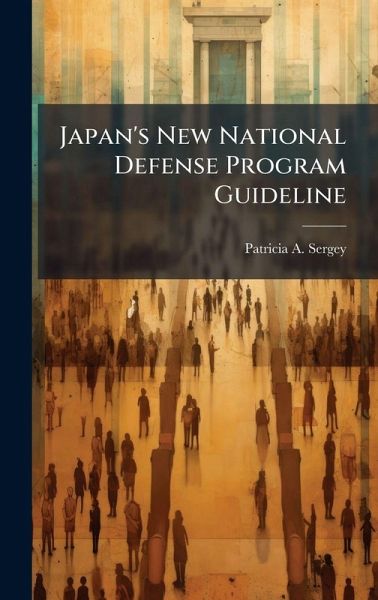
Japan's New National Defense Program Guideline
Versandkostenfrei!
Versandfertig in über 4 Wochen
25,99 €
inkl. MwSt.
Weitere Ausgaben:

PAYBACK Punkte
13 °P sammeln!
This paper analyzes Japan's National Defense Program Guideline (NDPG), which was approved by the Security Council and Cabinet on 10 December 2004. This paper will look at what led to the updated NDPG. It will also analyze the three-pronged approach of the new NDPG: building up of Japan's own defenses, continuing the strong alliance with the United States and more cooperation with the international community. In the new NDPG, while continuing to emphasize the importance of the US-Japan security alliance, Japan seems to be taking steps to forge its own role in security policy, not only in Asia, ...
This paper analyzes Japan's National Defense Program Guideline (NDPG), which was approved by the Security Council and Cabinet on 10 December 2004. This paper will look at what led to the updated NDPG. It will also analyze the three-pronged approach of the new NDPG: building up of Japan's own defenses, continuing the strong alliance with the United States and more cooperation with the international community. In the new NDPG, while continuing to emphasize the importance of the US-Japan security alliance, Japan seems to be taking steps to forge its own role in security policy, not only in Asia, but throughout the world. This paper examines the role Japan hopes to take in the future. It also looks at ramifications of the new NDPG. Research was taken from current press accounts of the impact of the new NDPG in addition to publications from the government of Japan and other sources who have an interest in Northeast Asian security. This work has been selected by scholars as being culturally important, and is part of the knowledge base of civilization as we know it. This work was reproduced from the original artifact, and remains as true to the original work as possible. Therefore, you will see the original copyright references, library stamps (as most of these works have been housed in our most important libraries around the world), and other notations in the work. This work is in the public domain in the United States of America, and possibly other nations. Within the United States, you may freely copy and distribute this work, as no entity (individual or corporate) has a copyright on the body of the work. As a reproduction of a historical artifact, this work may contain missing or blurred pages, poor pictures, errant marks, etc. Scholars believe, and we concur, that this work is important enough to be preserved, reproduced, and made generally available to the public. We appreciate your support of the preservation process, and thank you for being an important part of keeping this knowledge alive and relevant.












